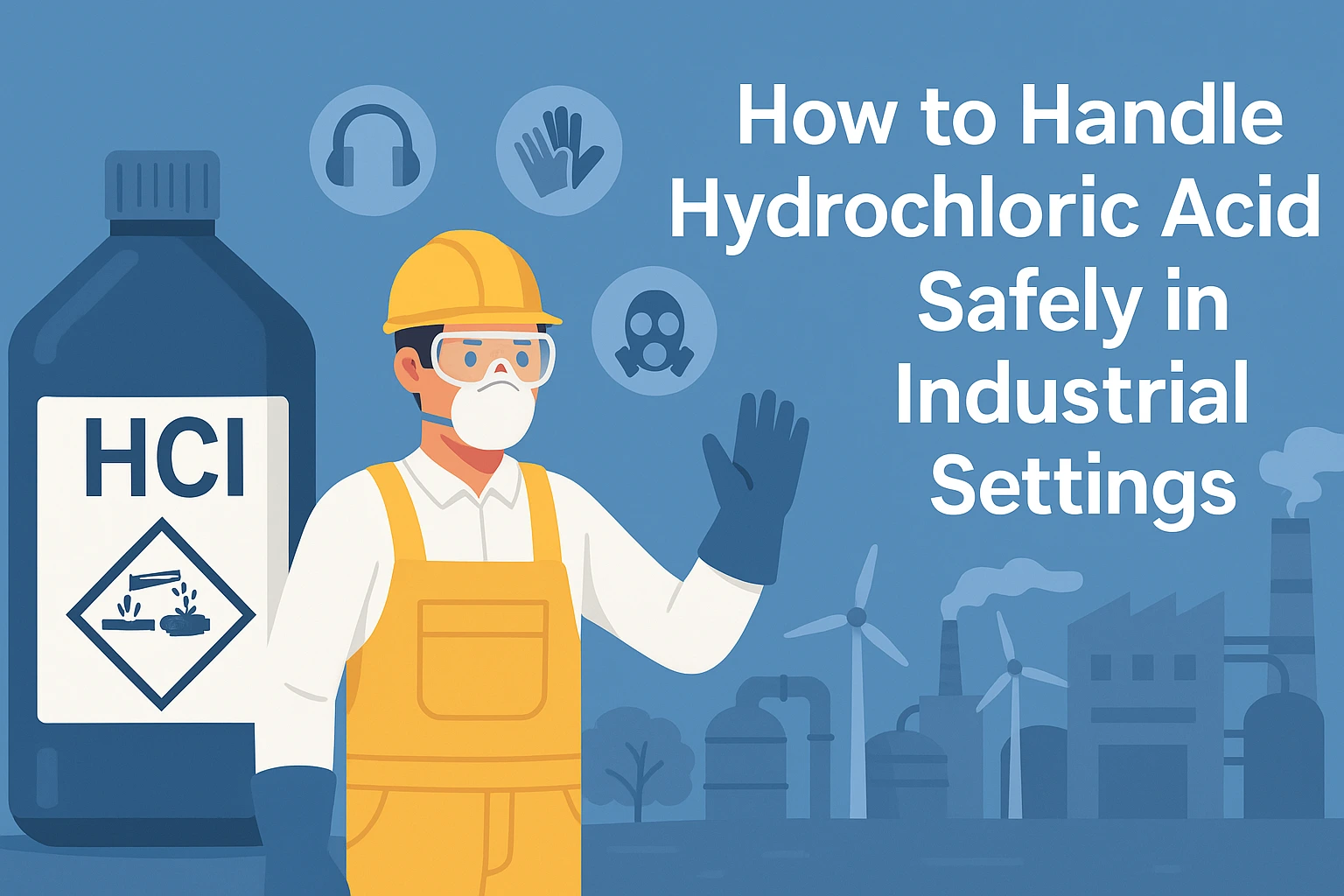How to Handle Hydrochloric Acid Safely in Industrial Settings
Water Treatment Chemicals

Table of Content
-
Introduction: Why Safe HCl Handling Is Critical
-
Personal Protective Equipment and Proper Storage
-
Safe Handling, Dilution, and Spill Response
-
Emergency Planning, Training, and Regulations
-
Conclusion: Embedding a Safety-First Culture
1. Introduction: Why Safe HCl Handling Is Critical
Hydrochloric acid (HCl) is a core chemical in metal processing, pH control, and manufacturing, but presents severe risks—skin/eye burns, inhalation hazards, and corrosive spills—when mishandled. Its high consumption rates and hazard ranking make safety protocols, PPE, and emergency plans essential for every site. Regulatory agencies like OSHA, EU REACH, and national frameworks mandate stringent controls, signage, and reliable training for all personnel in contact with HCl.
2. Personal Protective Equipment and Proper Storage
-
PPE Essentials: Minimum PPE includes neoprene/nitrile gloves, chemical goggles or a full-face shield, acid-resistant aprons, and, for concentrated HCl, respirators. Emergency eyewash stations and showers must be near handling areas.
-
Storage: Store HCl in secondary containment (acid-resistant trays/tubs), in well-ventilated spaces; keep containers upright, tightly sealed, away from incompatible materials (organics, combustibles, oxidizers). Only transfer with stable funnels/pumps, maintain a safe buffer zone, and have clear hazard labeling.
3. Safe Handling, Dilution, and Spill Response
-
Handling Tips: Always add acid to water—not water to acid—to prevent dangerous heat and splattering. Use pumps or pipettes for transfer, never pour directly from bulk containers. Work in fume hoods or well-ventilated rooms, and do not eat or drink in chemical storage areas.
-
Spill Response: For small spills, evacuate the area, ventilate, and contain with spill pads or neutralizer (e.g., sodium bicarbonate). For >1 L, isolate, alert emergency response, and only trained/fully-protected staff should attempt cleanup. Dispose of clean-up materials and contaminated PPE per hazardous waste protocols.
4. Emergency Planning, Training, and Regulations
-
Training: All staff must receive detailed HCl hazard, handling, and response training; regular drills and written SOPs are mandatory for industrial compliance.
-
Emergency Plans: Have documented action steps for exposure (flush, remove clothing, seek medical aid), fire (HCl releases toxic gases if heated), and large releases (emergency alarm, site evacuation).
-
Legal Compliance: Regulatory bodies require exposure monitoring, health surveillance, and up-to-date placards and permits. Never exceed OSHA/NIOSH exposure limits (5 ppm ceiling); proactive audits help reduce insurance and liability costs.
5. Conclusion: Embedding a Safety-First Culture
Proper HCl handling is non-negotiable—integrating PPE, storage, emergency response, and compliance into daily routines keeps workers safe and operations legal. Invest in ongoing training, site reviews, and supplier partnerships to prevent accidents and future-proof your chemical operations.

Leave a Comment